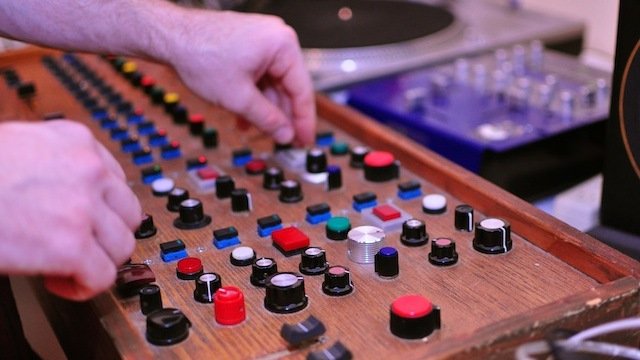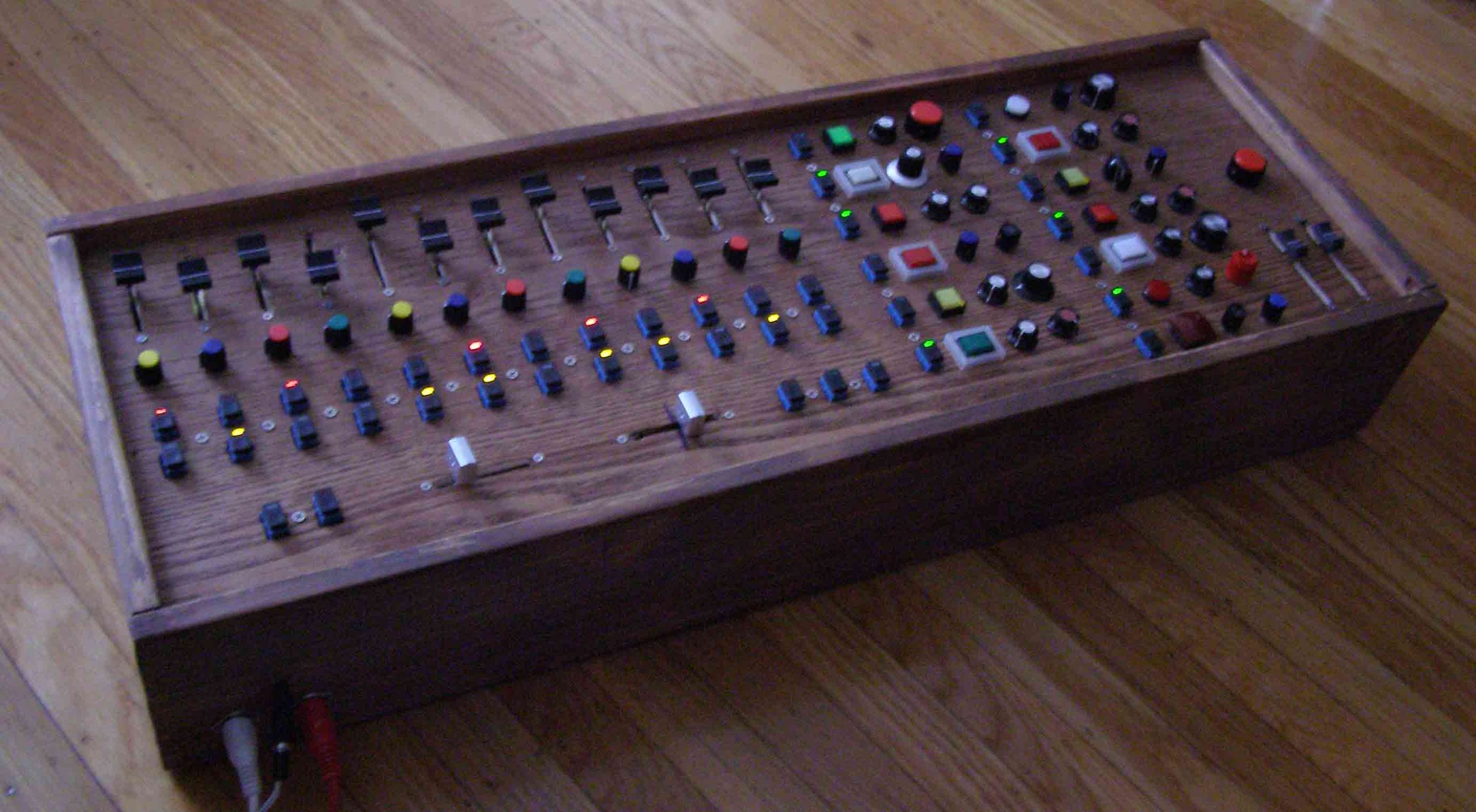
Splinter
role: designer / engineer / software developer
Splinter is a midi controller built in 2006 based on the MIDIbox system, utilizing 68 analog in ports for knobs and faders, 55 digital in ports for buttons, and 42 digital out ports for LEDs. Splinter predates the late 2000s explosion of multi purpose midi controllers for electronic musicians. It has several unique features, many of which were adopted by designers after Splinter was created:
Multi color LED feedback
Spring loaded buttons
DJ style crossfaders
Mix section with assignable aux knobs and buttons
FX section with assignable knobs and buttons
Global element section
Battery or transformer power
Functions controlled by Splinter vary from one performance to the next, but several functions have become relatively common. The following represent common functions:The row of 12 faders at the top are volume control for 12 discreet channels.
The row of 12 knobs directly beneath the row of faders control some aspect of the module on that channel. This function varies a great deal depending on if the module is a player, sampler, looper, recorder, synth, input or master looper.
The same applies to the row of 12 buttons and red LEDs directly below the row of knobs.
The row of 12 buttons and yellow LEDs below that are generally related to the routing of each channel to each side of the crossfader on the right and to the FX section on the right side of Splinter. Pushing a button on this row will cause that channel to toggle between the left and right side of the crossfader. Pushing a button on this town while holding down the button located three buttons to the right of the crossfader will cause that channel to toggle between routing through the FX chain or not. The LEDs indicate routing with one of 4 states as follows: 1) LED off = right side of crossfader and dry / 2) LED on = right side of crossfader and wet / 3) LED flashing slow = left side of crossfader and dry / LED flashing quickly = left side of crossfader and wet
The 2 buttons on the bottom left move forward and backwards through preset "scenes" that tend to change out samples and FX settings.
The crossfader on the left is a bit of a wildcard that has controlled input of a mic, multiple global FX parameters, and crossfaded between 2 incoming channels of audio.
The crossfader on the right controls the mix between channels sent to the left side and those sent to the right side.
The three buttons to right of that crossfader tend to control some global function like tap tempo. The button furthest to the right of these 3 buttons acts as a modifier key for FX routing.
There are 13 rows, each consisting of 2 buttons, an LED and 2 knobs. The most common use for each of these rows is as a DSP effect. The LED on the left turns on when audio is being routed through the effect and can flash to indicate other states or tempos. The button furthest to the left controls a key aspect of the effect. The larger, spring loaded button controls routing to the effect. The 2 knobs on the right control key aspects of the effect.
The red knob on the right controls global tempo. The fader below that, to the left controls the volume of the FX chain and the fader to the right controls the master volume.

